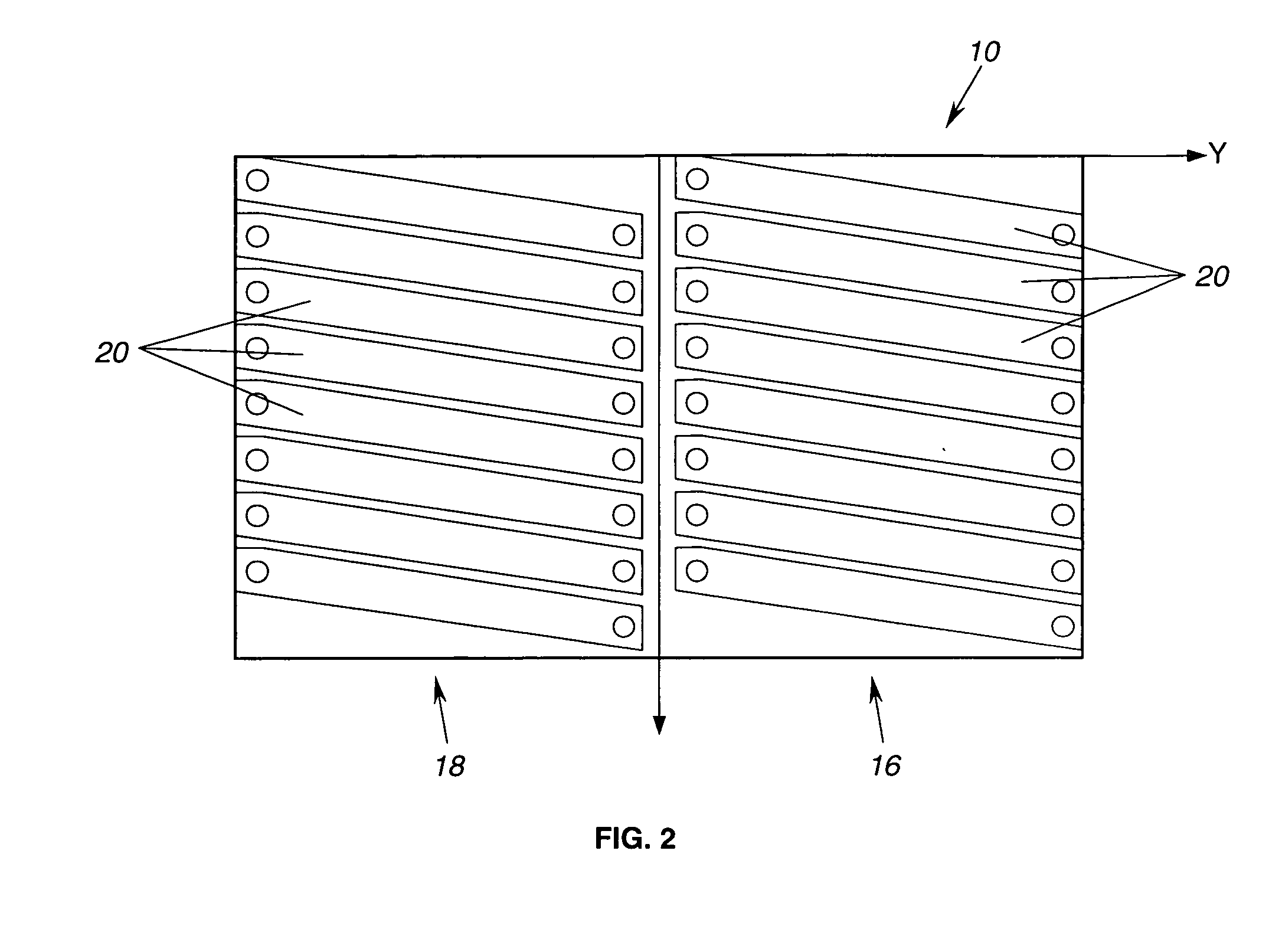Embedded duo-planar printed inductor
a duo-planar printed and inductor technology, applied in the field of inductor, can solve the problems of reducing reducing the effective inductance, and typically unsatisfactory effects, so as to reduce the q value of components and reduce the effective inductance
- Summary
- Abstract
- Description
- Claims
- Application Information
AI Technical Summary
Benefits of technology
Problems solved by technology
Method used
Image
Examples
Embodiment Construction
[0022] As shown in the drawings for purposes of illustration, the present invention is concerned with printed inductors formed on a printed circuit board structure. Prior to this invention, printed inductors used spiral traces or traces of other shapes on a single metallized layer of a printed circuit board. Alternatively, wire-coiled inductors may be surface mounted on a printed circuit board. Neither of these solutions has been able to achieve desirably high values of inductance and a lower frequency contourable Q in a compact structure.
[0023] In accordance with the present invention, a printed inductor takes the form of conductive traces in two parallel planar layers of a printed circuit board structure, the conductive traces being electrically connected by metal vias extending between the two planar layers. The details of this construction are best shown in the perspective view of FIG. 1, considered in conjunction with the top view, lateral view and front view of FIGS. 2-4, res...
PUM
| Property | Measurement | Unit |
|---|---|---|
| capacitance | aaaaa | aaaaa |
| frequency | aaaaa | aaaaa |
| frequency | aaaaa | aaaaa |
Abstract
Description
Claims
Application Information
 Login to View More
Login to View More - R&D
- Intellectual Property
- Life Sciences
- Materials
- Tech Scout
- Unparalleled Data Quality
- Higher Quality Content
- 60% Fewer Hallucinations
Browse by: Latest US Patents, China's latest patents, Technical Efficacy Thesaurus, Application Domain, Technology Topic, Popular Technical Reports.
© 2025 PatSnap. All rights reserved.Legal|Privacy policy|Modern Slavery Act Transparency Statement|Sitemap|About US| Contact US: help@patsnap.com



